Growing root parsley is more practical than leaf parsley. This variety is edible not only the leaves, but also the roots. Root crops from seeds can be grown in one summer. The culture is cold-resistant. It grows well in Siberia, the Urals and in the middle zone of the Russian Federation. Breeders developed varieties of different ripening dates. They differ in the shape and size of root crops, keeping quality.
Content
What parsley is called root
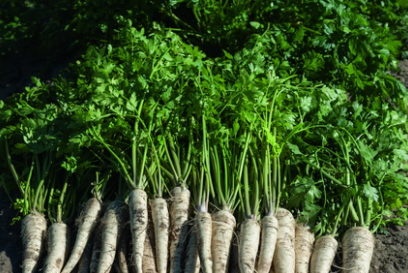 Root parsley is a two-year-old plant. The height of the aerial part can reach a length of 100 cm. It is represented by straight branching stems covered with bright green, dissected leaves. They are more stringent than leaf varieties. They are used for cooking hot dishes.
Root parsley is a two-year-old plant. The height of the aerial part can reach a length of 100 cm. It is represented by straight branching stems covered with bright green, dissected leaves. They are more stringent than leaf varieties. They are used for cooking hot dishes.
The underground part is a thickened root having a conical shape. It is formed in the first year of life. The average root length is 20-30 cm. The skin is white-brown, white or white-yellow. The pulp is white or cream color, dense, aromatic.
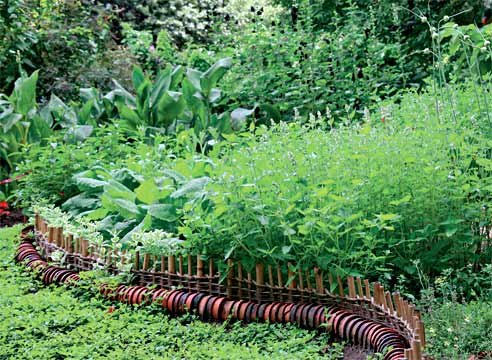 You may be interested in:
You may be interested in:The plant of the second year of life in June-July throws a peduncle. Its height is 70-150 cm. An umbrella inflorescence is formed on it, consisting of small, yellow-white flowers. After flowering, fruits are formed. They are dark, oblong, flattened laterally.
Popular varieties of root parsley
In the garden, they cultivate varieties of sugar root parsley of different ripening dates. In early and late varieties, the quality of root crops and greenery is different.
|
Characteristics of the variety by maturity |
Greenery |
Root crop |
Appointment |
| Early | The outlet is a bit, the leaves are hard | Short, thick | Drying, fresh consumption |
| Late | There are many in the outlet, the leaves are juicy, fragrant | Long (40 cm) | Long-term storage |
Sugar
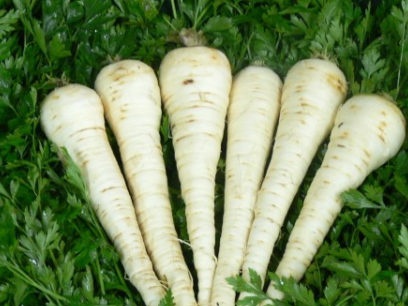 Old, productive, precocious variety. The growing season is 80-95 days. The plant forms a large rosette of dark green leaves (20-40 pcs.) And conical root crops 20-30 cm long with white fragrant flesh, a yellowish core.
Old, productive, precocious variety. The growing season is 80-95 days. The plant forms a large rosette of dark green leaves (20-40 pcs.) And conical root crops 20-30 cm long with white fragrant flesh, a yellowish core.
The variety has a universal purpose. The aboveground and underground parts are used for food. A medium-sized root crop weighs 70-80 g and tastes great. The only drawback of the variety is its short shelf life.
Alba
The product characteristics of root crops of Alba root parsley are clearly visible in the photo. They are even, large. Average weight 200-300 g, length 20-25 cm, lateral roots absent. The variety has good taste characteristics.
Greens and root vegetables are fragrant, tasty. The crop is stored for a long time. The variety pleases with productivity. From a ridge of 10 m², up to 50 kg of Alba parsley is collected. The view is late ripe. This is taken into account when landing. After the emergence of seedlings, the root crops are ready for harvesting in 170-180 days.
Harvest
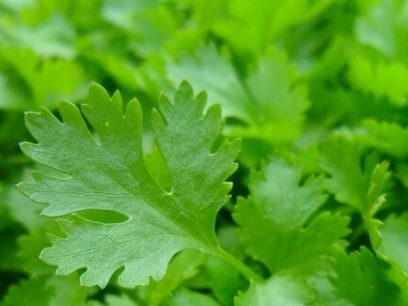 From 1 m², 3.5-6 kg of root parsley of the Urozhaynaya sugar variety are dripped. The weight of root crops is 2-3 kg / m². From seedlings to harvesting takes 100-130 days. The variety is mid-season. During the growing season, the plant forms spreading rosettes consisting of 11-20 fragrant leaves. Characteristics of root crops:
From 1 m², 3.5-6 kg of root parsley of the Urozhaynaya sugar variety are dripped. The weight of root crops is 2-3 kg / m². From seedlings to harvesting takes 100-130 days. The variety is mid-season. During the growing season, the plant forms spreading rosettes consisting of 11-20 fragrant leaves. Characteristics of root crops:
- length - 20 cm;
- the flesh is white;
- weight - 120 g.
Application
Parsley root is used in home cooking, cosmetology, medicine, diet food. The root crop contains a complex of useful substances. In addition to proteins, fats and carbohydrates, they have vitamins (A, E, C, B), mineral salts, organic acids, and dietary fiber.
Culinary experts value parsley root for its original bittersweet taste. The pulp of the root crop goes well with fish, meat, vegetables. It is eaten raw, added to vegetable and fruit salads, seasoned soups, added to stews, used as a spice in homemade preparations.
Benefit and harm
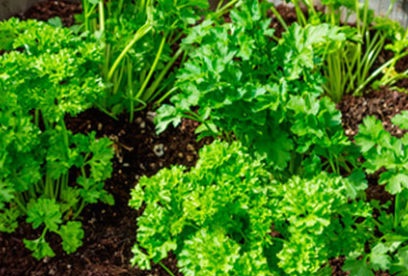 Regular consumption of parsley root improves vision. It is positively affected by carotene contained in the pulp. Dietary fibers normalize stool, stimulate the intestines. Vitamin C strengthens general immunity.
Regular consumption of parsley root improves vision. It is positively affected by carotene contained in the pulp. Dietary fibers normalize stool, stimulate the intestines. Vitamin C strengthens general immunity.
Parsley root is widely used in folk medicine. On its basis, decoctions, infusions are prepared. Apply them internally or externally. There are contraindications. It is not recommended to use a fresh root crop, to use it for medicinal purposes for people with the following pathologies:
- stomach ulcer (during periods of exacerbation);
- cystitis;
- nephritis.
|
Recipe No. |
Ingredients |
amount |
Time for preparing |
Appointment |
|
1
|
Shredded, dry roots | 1 tbsp. l |
30 minutes
|
From excess gas formation
|
| Boiling water | 200 ml | |||
|
2
|
Shredded, dry roots | 50 g |
30 minutes
|
Rub into scalp to strengthen hair
|
| Boiling water | 300 ml | |||
|
3
|
Juice | 15 ml |
Mix before use, drink before meals
|
For cleansing blood vessels, improving heart function
|
| Water | 100 ml |
The following useful properties of infusions, decoctions and fresh roots of sugar parsley are tested in practice:
- normalize the menstrual cycle;
- strengthen men's health;
- serve as prevention of prostatitis;
- clean the liver;
- remove toxins from the body;
- normalize acidity;
- prevent osteoporosis;
- reduce swelling.
Features of growing root parsley
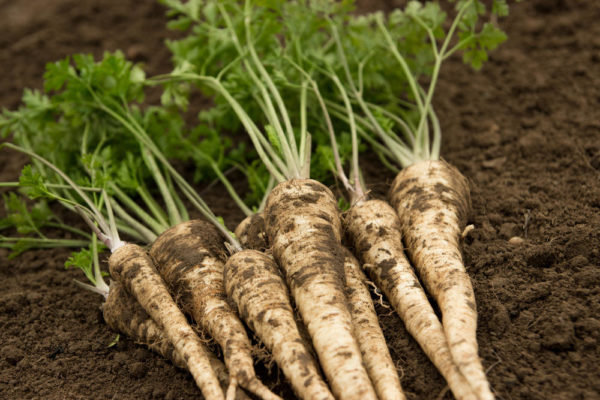 Cultivation technology has its own characteristics. It is successfully grown in closed, open ground and in an apartment. Harvest depends on the quality of the soil, the level of lighting. For the prevention of diseases in the garden, crop rotation must be observed. In greenhouses, once every 2 years, carry out soil replacement.
Cultivation technology has its own characteristics. It is successfully grown in closed, open ground and in an apartment. Harvest depends on the quality of the soil, the level of lighting. For the prevention of diseases in the garden, crop rotation must be observed. In greenhouses, once every 2 years, carry out soil replacement.
Landing time
Root parsley is sown in open ground in spring and late autumn. The culture is resistant to low temperatures. In the spring, seeds are sown early, while the soil is wet - March, April. The soil should warm up only 4 ° C. In the fall they plant dry seeds 2-2.5 weeks before the onset of frost. The ridge is done earlier, while there are warm days.
Choosing a place to land
Good predecessors of root parsley will be cabbage, potatoes, tomatoes. Subject to crop rotation, the culture is returned to its former place once every 3 years. The site is chosen in the sun or in partial shade. Soil requirements:
- loose, so that root crops are even and long;
- well-conducting moisture - light loam, sandy loam;
- slightly acidic.
|
Tillage |
Fertilizer |
Quantity per 1 m² |
|
In the spring
|
Superphosphate | 3 tbsp. l |
| Ammonium nitrate | 1.5 tbsp. l | |
| Ash | 1 tbsp | |
| Fall | Humus | 5 kg |
The ridge is prepared in advance. They dig the soil deep - 25-30 cm.
Root parsley: outdoor cultivation
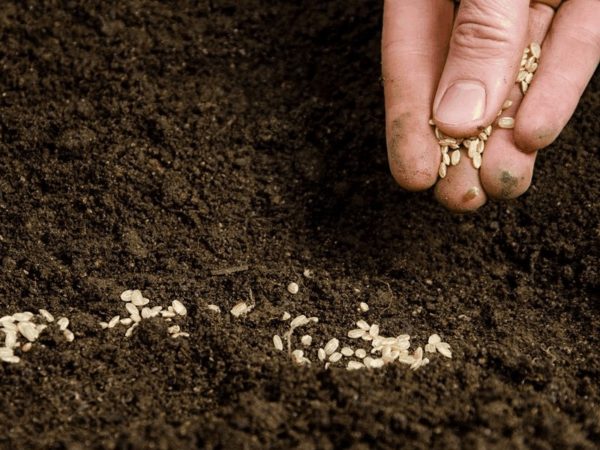 When spring sowing of root parsley, a ridge is prepared in the fall. Begin planting as soon as the soil warms up to 4-5 ° C. Furrows are formed with a depth of 2 cm. They are made in increments of 20-30 cm. They are shed with water. They wait until the earth settles, becomes dense.
When spring sowing of root parsley, a ridge is prepared in the fall. Begin planting as soon as the soil warms up to 4-5 ° C. Furrows are formed with a depth of 2 cm. They are made in increments of 20-30 cm. They are shed with water. They wait until the earth settles, becomes dense.
Seeds are sown densely. Consumption 4-6 g / m². Sprinkle them with a mixture of humus and garden soil (1: 1), mulch with peat or humus.Seeds of root parsley are planted to a depth of 1-2 cm. After germination, thinning is performed twice:
- the first is in phase 2 of this leaf, leaving a distance between the shoots of 2-3 cm;
- the second - 2 weeks after the first, leaving a distance between the shoots of 7 cm.
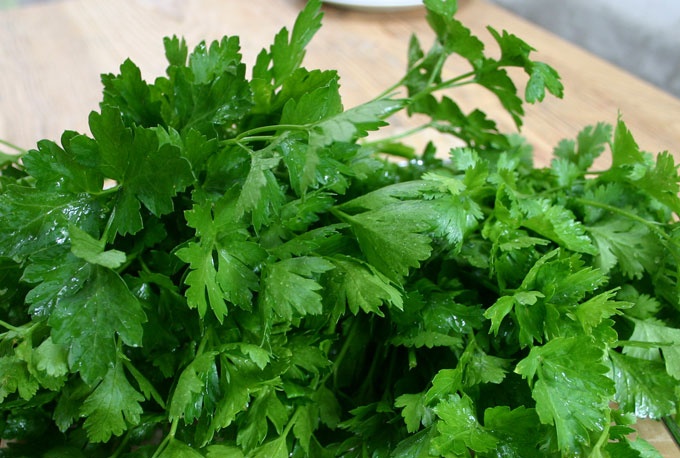 You may be interested in:
You may be interested in:Growing root parsley at home
For lovers of healthy food, the question arises whether it is possible to plant a healthy vegetable at home. It is very convenient to have a vitamin bed on the windowsill. To plant root parsley in the apartment, you must have:
- a suitable container - the height of the pot, container is not less than 20 cm;
- fertile soil with a neutral or slightly acidic reaction.
In the pot leave 2-3 sprouts. During the growing season, the plant feels better at a temperature of 15-20 ° C, 4-10 ° C is enough before emergence. For normal growth in an apartment, parsley needs to create daylight hours, the duration of which is at least 16 hours.
For illumination, use a phytolamp or a fluorescent lamp. Mineral fertilizers are applied normally to the soil during planting and in the form of liquid solutions after the next cut. To eliminate rot, water the parsley regularly, but in moderation.
Parsley root: growing in a greenhouse
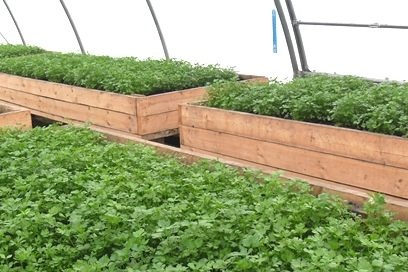 There are no problems with growing parsley in closed ground. The necessary conditions are created for culture for development:
There are no problems with growing parsley in closed ground. The necessary conditions are created for culture for development:
- the ridge is seasoned with a fertile substrate;
- install a drip irrigation system;
- in winter and early spring include lighting.
Culture is sown in heated greenhouses in January-February, in unheated buildings in March-April. Sowing and thinning seedlings is carried out as in the open ground.
Care Features
To grow a good crop, you need to know the features of planting and the rules for caring for root parsley.
During the summer, the ridge is watered, the soil is loosened, weeds are regularly removed, the plants are thinned out, treated for pests and diseases.
Watering Rules
A bed with root parsley is watered in the morning or in the evening. Water is poured under the root. Sprinkling method is not used. In wet weather, watering stops or reduces their frequency. The maximum moisture demand is in August. At this time, the approximate water flow rate is 20 l / m².
Top dressing
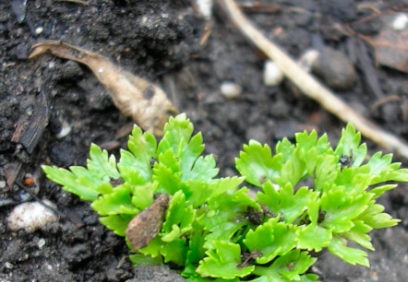 Look after root parsley all summer. After the first thinning, parsley is fed with infusion of grass or mullein diluted with water in a ratio of 1:10. The next time watered with a solution of mineral fertilizers after the second thinning.
Look after root parsley all summer. After the first thinning, parsley is fed with infusion of grass or mullein diluted with water in a ratio of 1:10. The next time watered with a solution of mineral fertilizers after the second thinning.
Dissolve in a bucket of water:
- potassium salt - 50 g;
- ammonium nitrate - 10 g.
The third time they are fed with ash. She is scattered around the ridge after watering. Consumption - 1 st / m².
Possible diseases of parsley root
During the growing season on the leaves you can see the symptoms of diseases. The most common:
- white spotting;
- rust;
- peronosporosis;
- white rot;
- cercosporosis.
|
Symptoms |
Disease |
| Yellow, chlorotic spots on leaves | Peronosporosis |
| Light spots on the bottom of cuttings and leaves | White spotting |
| Yellow or brown spots on round leaves or stripes | Cercosporosis |
| Rusty spots appear in early summer | Rust |
| White plaque at the top of the plant, the root rot | White rot |
The causes of the disease are excessive irrigation, thickened planting, lack of light, and crop rotation failure.
Pests
On the root parsley aphid gourd, carrot fly attack. The biggest harm is done by the carrot leaf larvae.They parasitize on the top of the root. For prevention, the ridge is sprinkled with ash mixed with tobacco dust in a ratio of 1: 1.
When aphids appear, parsley leaves are washed with a soap-ash solution or infusion of onion husks. The treatment is repeated every 3 days. To repel a carrot fly, plants are sprayed with water, adding kerosene to it. In 1 liter pour 1 tbsp. l means.
Harvesting and storage of crops
Parsley is not afraid of cold snap, so they harvest it in late autumn. Choose a dry, sunny day. Root crops are dug up with forks, pulled out of the ground. Cut greens, leaving a small stump. Harvest stacked under a canopy for drying. After 1-2 days, they are allowed for processing or sent for storage.
In winter, root parsley is stored at a temperature of 0-2 ° C. in a cellar or utility room. Maintain high air humidity - 85-90%. Root crops are laid in boxes in layers, sprinkled with sand. For long-term storage, the vegetable compartment of the refrigerator is suitable. In it, parsley is stored in plastic bags.
Most housewives prefer to harvest root parsley for the future. Use two methods:
- drying;
- freezing.
Dry the peeled and chopped root vegetables in an oven or in an electric dryer. Store in a glass container with a sealed lid. For freezing, the roots are cleaned, washed, cut into slices or cubes, laid out in plastic bags and put into the freezer.
Root crops can be left in the ground for the winter. This is one of the popular ways to store crops. The aerial part is cut off. The ridge is covered with a layer of river sand, covered with a film. In winter, snow is poured on it.
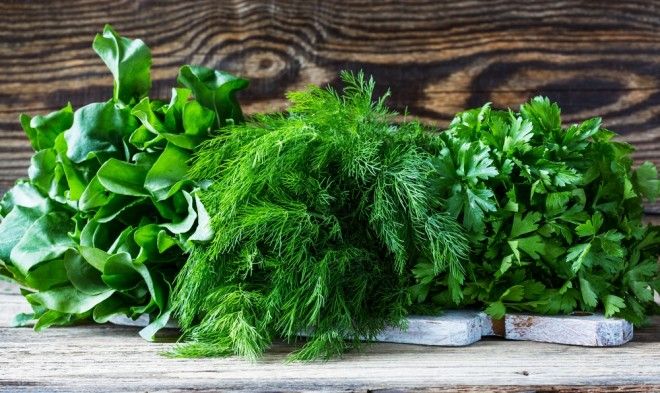 You may be interested in:
You may be interested in:Sowing root parsley is easy. Care and cultivation of root parsley takes a minimum of time. A crop of high-quality root crops is easy to grow on a well-prepared ridge seasoned with mineral and organic fertilizers. Later varieties of root parsley lie in the cellar until spring. Early and mid-season varieties are dried or subjected to rapid freezing. The regular use of root vegetables has a positive effect on health and appearance.


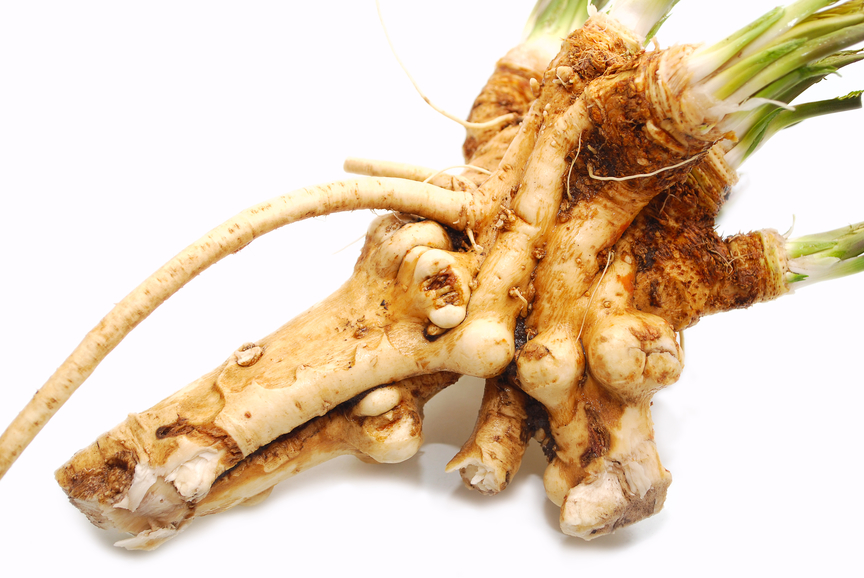
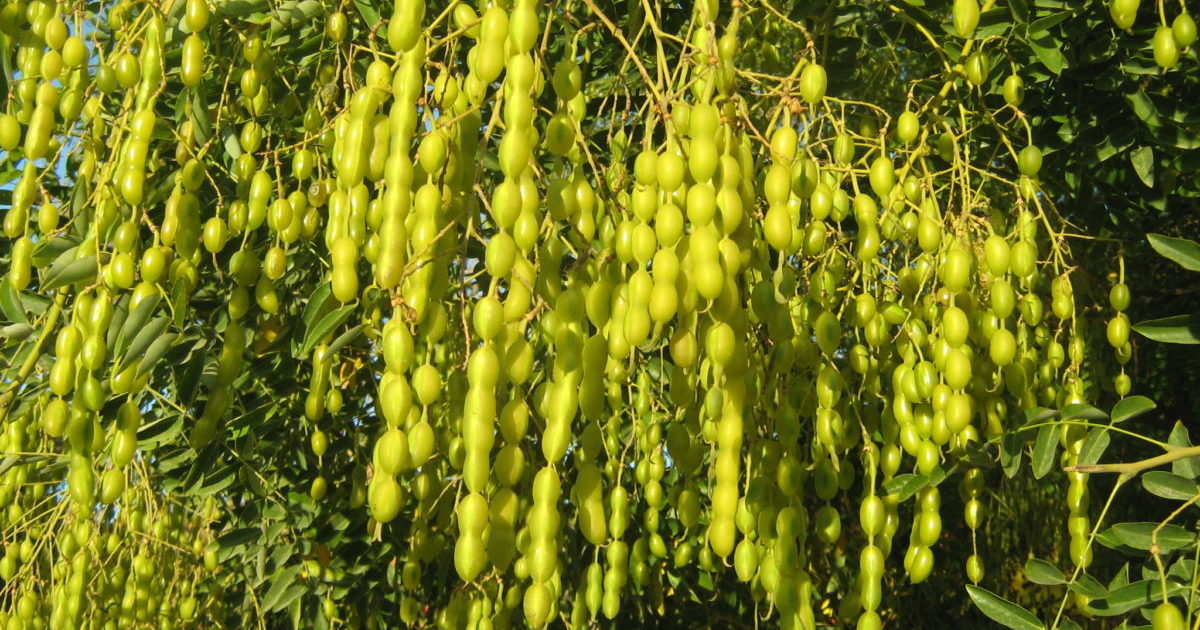
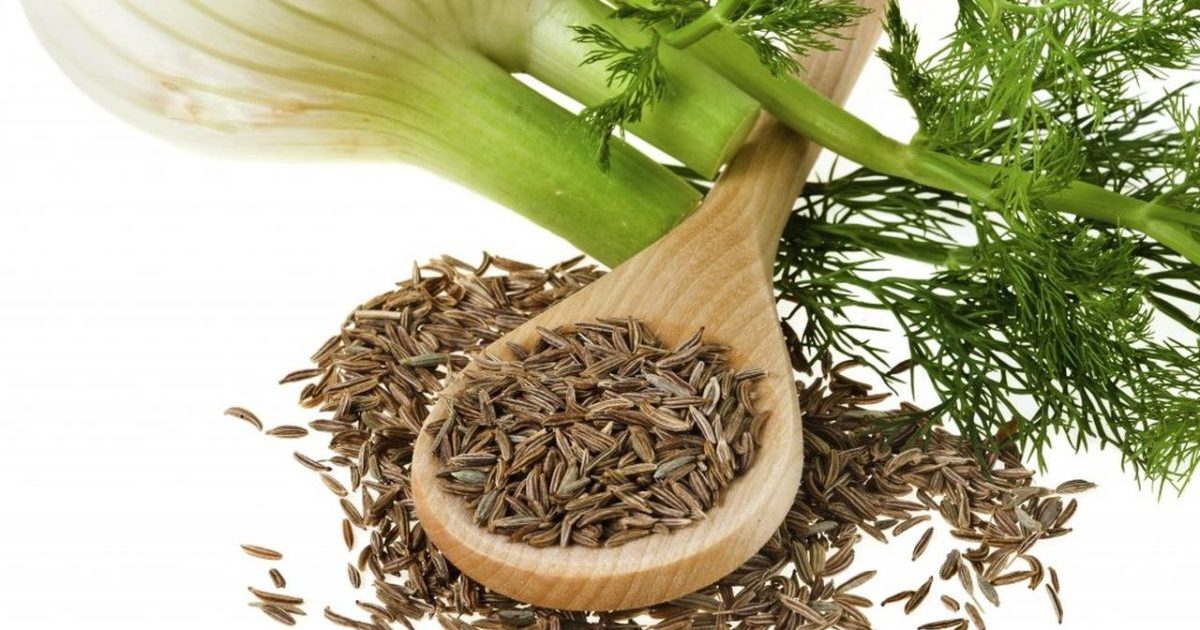 Fennel - beneficial properties and contraindications
Fennel - beneficial properties and contraindications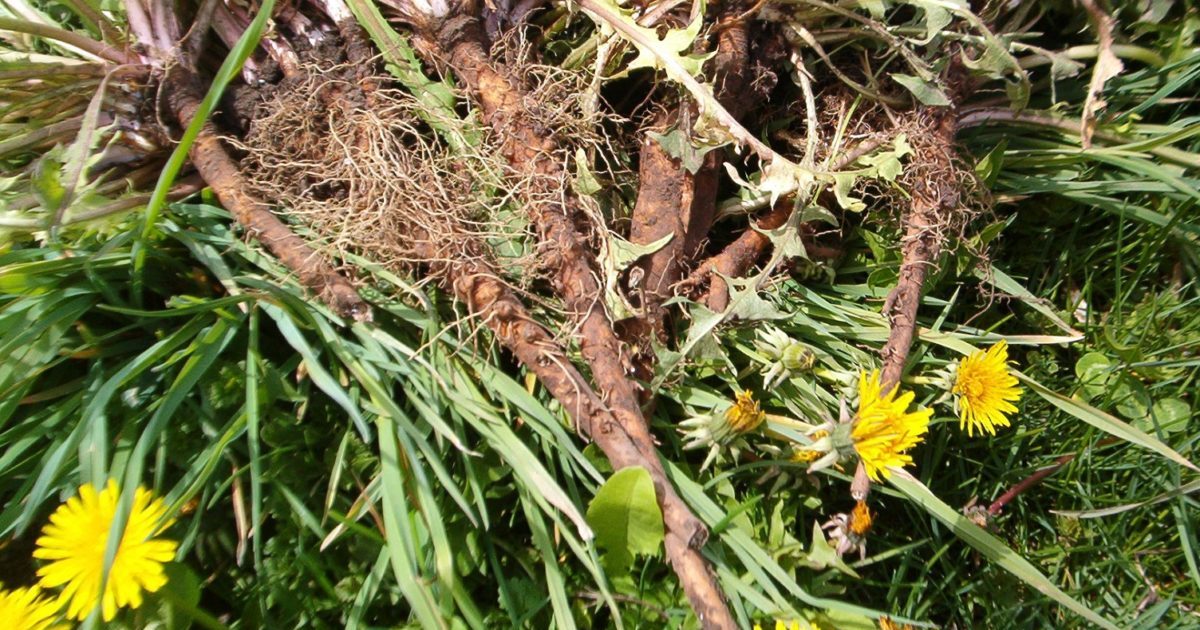 Dandelion Root - Health Benefits and Contraindications
Dandelion Root - Health Benefits and Contraindications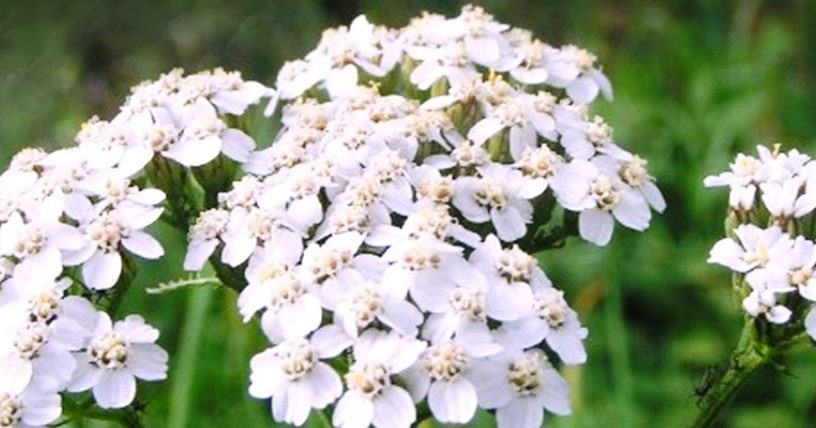 Yarrow - beneficial properties and contraindications for health
Yarrow - beneficial properties and contraindications for health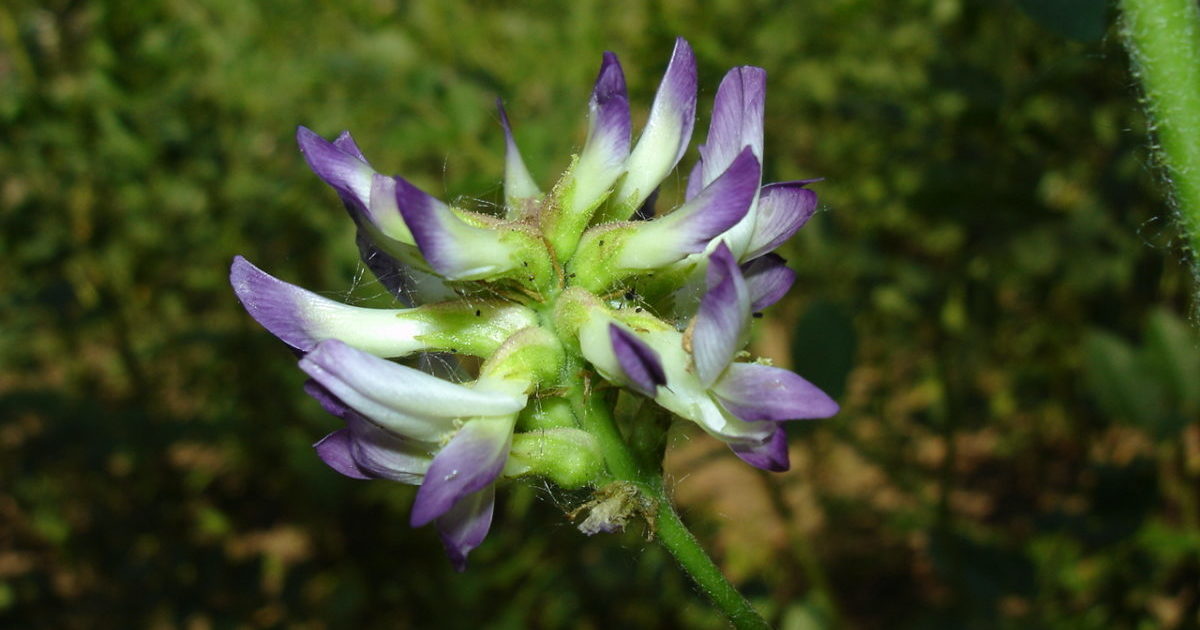 Licorice - beneficial properties and contraindications for health
Licorice - beneficial properties and contraindications for health